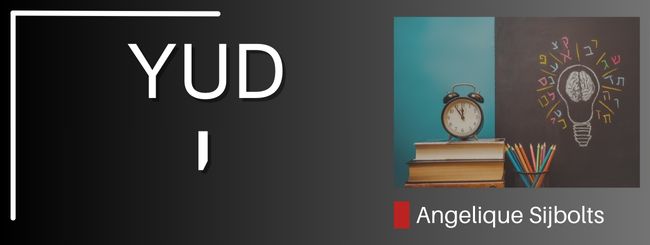
The 10th letter of the Aleph-Beis is the Yud
We saw this letter in the previous blog of the letter bet in the word “house” Beit – בַּיִת.
The second letter is the wav ו and the third letter is the dalet ד
It has the sound of y as in “yet”.
It has the gematria of 10.
It is the smallest letter, no more than a dot. A letter that is completely one and cannot be divided into other letters. Like for example the lamed ל which you could see as a yud י above a chof כ. It is this letter that refers to G-d from Whom everything originates.
Every human being has in his “house” beit – in his body a very small point of G-d.
This Divine soul, this Divine light – our attributes – we must develop and make visible in the world, however small.
The best way to do that is through our hands. Hand in Hebrew is the word Yad יָד, which is also a meaning of the letter Yud. For it is only in our deeds – [and words] that the world can truly see that Divine spark, because when one hand [man] helps the other [person] with respect and dignity, G-d is present.
When people help each other, deep friendships are formed. Which brings us to the word Yedid יְדִיד meaning “close friend”, which brings us to the Dalet ד , which we will look at in more detail in the next blog.
We have seen that the vowel signs – nikudot – are either below or above the consonant. We see this in the first part of the word Ye-did. Under the Yud is a swa, which here is pronounced as a short -e sound.
Then under the Dalet we see the chireq – which represents an i – sound. Under the Yud itself there is nothing.
The Yud [ together with the wav and the heh ] can be used as a Matres Lectionis. That is, the Yud in this case is not used as a consonant but as a vowel. The advantage of this is that when the nikodot are not used you can know that a vowel should be used here. In the case of the Yud that can be an i, e, or ee sound. So a Chireq, tseree or a segol. ִ ֵ ֶ
We are now familiar with the: ב י א ל פ (ף) and with the: ִ ּ ֶ ָ ַ ֵ ֹ
[ i, dagesh, e, aa, a, ee, o ] and can now read the following words, among others:
Perek Shira 5:2
פִּיל אוֹמֵר. מַה גָּדְלוּ מַעֲשֶׂיךָ יְיָ מְאֹד עָמְקוּ מַחְשְׁבֹתֶיךָ:
The Elephant is saying: “How great are your works, YHVH; Your thoughts are tremendously deep.”
Exodus 15:2
עָזִּ֤י וְזִמְרָת֙ יָ֔הּ וַֽיְהִי־לִ֖י לִֽישׁוּעָ֑ה זֶ֤ה אֵלִי֙ וְאַנְוֵ֔הוּ אֱלֹהֵ֥י אָבִ֖י וַאֲרֹמְמֶֽנְהוּ׃
HaShem is my strength and might; and song. He is become my deliverance.
This is my God and I will glorify Him; The G-d of my father’s [house], and I will exalt Him.
[The Yud is placed at the end of a word to represent the possessive first person pronoun. So in this case father + my]
Song of Songs 5:2
אֲנִ֥י יְשֵׁנָ֖ה וְלִבִּ֣י עֵ֑ר ק֣וֹל
I was asleep,
But my heart was wakeful.
Learn more about the Yud


By Angelique Sijbolts
Sources: The Wisdom in the Hebrew Alphabet, Grammatica vh Bijbels Hebreeuws by E. Lettinga, Grammar For Biblical Hebrew by C. Seow, ChabadVideo
@ Copyright, all rights reserved. If you enjoyed this article, we encourage you to distribute it further.
